
Before being bought by Sony, the North American studio started carving its name at Microsoft, where its founders come from.
Sony is already preparing the new generation of consoles. PlayStation 5 is the next big base of operations of the Japanese company and, to return to dispute the throne of the industry in the sale of hardware, it will use its internal studies to transmit that complex message of need to buy its product. Before that, both Naughty Dog and Sucker Punch will be responsible for dismissing PS4 with two video games on which falls both expectation and responsibility: The Last of Us Part II and Ghost of Tsushima. Now is the time to learn more about the latter, their roots and how they have become one of the first PlayStation swords.
Microsoft and Nintendo 64: everything has a beginning
It was 1997 when some young, inexperienced but passionate Microsoft developers decided to leave the company and take advantage of their knowledge in application and software development to found their own company. Chris Zimmerman, Brian Fleming, Bruce Oberg, Darrell Plank, Tom Saxton and Cathy Saxton wanted to enter the video game sector, that industry that in the United States some were beginning to see as the next major focus of economy in the entertainment sector.
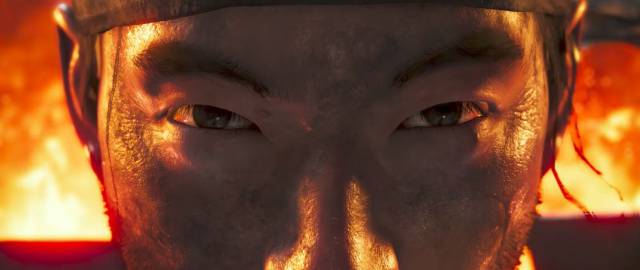 Ghost of Tsushima
Ghost of Tsushima
In a meeting with Engadget, Chris Zimmerman, already as director of the studio, commented in 2009 that “we got to have a list of ten or more names; until finally my beloved and talented wife saw the list. " The name is somewhat inconsequential in practice, since it does not imply greater or lesser quality in the product, but it was important for them because within Microsoft they were not allowed to choose the one they had originally intended.
Most notable that his wife, after viewing the list, said, "I don't care what you call the company as long as it's not Sucker Punch." Sucker, in Spanish, refers to a naive person, who believes everything. In the most informal language a fool or a "sucker".
"After twelve years, I think he has forgiven me," he confessed, as the name they finally decided is the one we all know. Their first video game, once established in Bellevue, Washington, in one of the most important cities on the west coast of the United States, would sign their first video game for Nintendo 64.
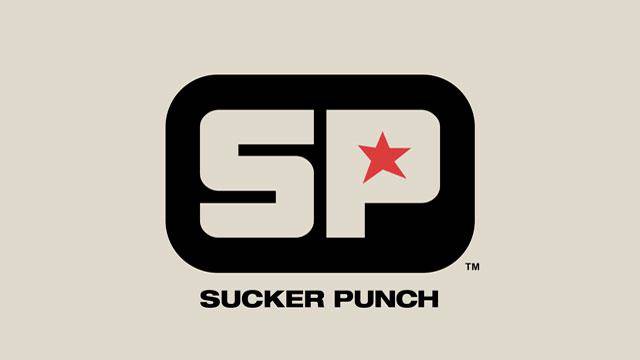
Rocket: Robot on Wheels, first Ubisoft order
Sucker Punch's debut as such would come from Ubisoft. The French studio would commission this commission from Sucker Punch Productions, a platform game where we would control a raccoon robot called Rocket, in the late 1990s. Like many other titles of the time, with special similarities to Spyro The Dragon (1998, Insomniac Games) in terms of gameplay, the task was to progress through levels and worlds while collecting objects, for which more complicated. Although its release finally occurred in October 1999 in North America and a couple of months later in Europe, the final name of the title was not decided until shortly before that time; meanwhile, inside the studio it was simply "Sprocket", as IGN relates in an article of the time.
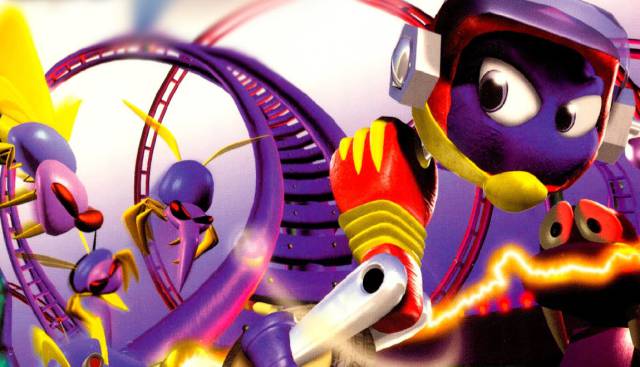 Rocket: Robot on Wheels
Rocket: Robot on Wheels
The reception of the game in the North American press was remarkable. Media like Gamespot blamed certain problems with the camera, something common in some games of platfromas of that time, although wicker was recognized for future deliveries that never came.
Sly Cooper Trilogy: The Legend of the Thief
The turn of the millennium would bring new opportunities for Sucker Punck. Shortly after finishing Rocket, Sony and Sucker Punch would reach an agreement to develop what would end up becoming the first installment of Sly Cooper for PlayStation 2, which would drink directly from the company's first video game, only with the advantage of having more employees in the company, the development kits of the new PS2 and the most buoyant budget of the Asian giant. The first title of the saga would be called in Europe under the name of Sly Racoon, but it finally ended up prevailing the original nomenclature. The protagonist was a raccoon. Again, a raccoon as a master of ceremonies.

Platforms, action and, for the first time, stealth. It was not short in ambition, with even dubbing into Spanish in the edition that we would receive in Spain back in January 2003. In a matter of three years the three titles that make up the trilogy would be released, each with its advantages and disadvantages, but a clear one evolution in a formula that greatly convinced criticism. This time it was Ratchet & Clank the main parallel rival within PlayStation, where Insomniac Games did the same with that saga that, finally, was more successful than that of the raccoon in the future.
Both Sly Racoon and White Glove Thieves and Honor Among Thieves were progressively longer and deeper games than their previous installment, a collection that would even be reissued for PlayStation 3 and PS Vita as The Sly Trilogy, although those HD ports would be developed by Sanzaru Games , the same company in charge of assuming the reboot of the saga in 2013 with Sly Cooper: Thieves in Time.
The day Sony bought Sucker Punch Productions
And the day came, the one that is known sometimes necessary to continue standing as a company: Sucker Punch Productions was acquired by Sony Computer Entertainment. It was August 2011, in the middle of the maturity of the last generation of consoles and with InFamous 2 as the main showcase for the Washington team. The Japanese thus closed the second purchase of the three components of the so-called "platform trio" of PlayStation: Naughty Dog (Jack & Daxter); Insomniac Games (Ratchet & Clank), which would be acquired in 2019; and Sucker Puck Productions (Sly Cooper).
 New Sucker Punch offices since 2017
New Sucker Punch offices since 2017
Sony knew that these companies were important to them, important when it came to linking their name to the PlayStation label and, therefore, that all their intellectual properties and talent on a creative level remained in the Japanese house. The financial amount of the transaction did not transcend, but Scott Rohde, senior vice president of Sony Computer Entertainment Worldwide Studios at the time, argued that they had been attracted to them for a long time because of "their high quality products over time". They were on the radar until, finally, a specific financial amount ended up making the deal come to fruition.
There were things that were not going to change even though Sony now owned their IPs; one of them, the creative freedom to work, although they could receive commissions at any time. Nor did it change its headquarters in Seattle, Washington, where they have operated since 1997. Currently, an entire plant in a huge skyscraper. Since then and until now, they are a SIE first party studio.
From there, InFamous: Festival of Blood, a standalone downloadable content, separate from the main game, for PlayStation 3. The map of the original sequel was reused and told a parallel story away from the main canon of the series. This was the first publication of the study as part of Sony's internal studies.
InFamous: Second Son and First Light: technical muscle for PS4
The arrival of PlayStation 4 on the market brought to the table not only a new generation of home consoles, the fourth for the Japanese team, but also a new tool for that long ten internal studies where, now also Sucker Punch, they were going to be able to work with more possibilities and guarantees.
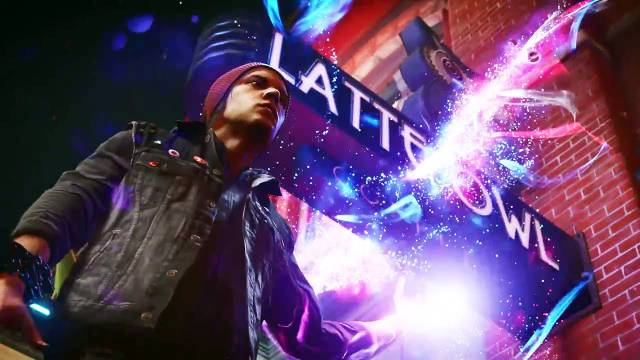
In the case that concerns us, they came from convincing critics with the first InFAMOUS (85 in Metacritic) and InFAMOUS 2 (83 in Metacritic), in addition to reaping great sales in markets such as the United States, where the weekly rankings of the NPD Group reached to position the game as the best-selling video game of the month of June 2011 in the United States. But now what? Guerrilla Games was the company chosen to debut on PS4 with a title that should show that PS4 was much more than the already veteran PlayStation 3; he had to give reasons to jump into the new generation. Killzone: Shadow Fall stayed on the threshold of the remarkable and, if we stick to the significance it has had over time, Sucker Punch's response was much more effective with InFamous: Second Son.
In this house it was on the edge of the outstanding. A recreation of Seattle where its neon flashes are remembered and a technical section that, despite having been released in March 2014, is still very much in force. The main artist and creative director of the studio, Jason Connell, explained what it meant for the team to be able to use HDR lighting and the so-called Physical Based Lighting. "The lighting team spent a lot of time investigating what it was like to shine in outdoor areas at different times of the day," a task that took up much of the video game's pre-production. With this technique, they managed to make some lighting effects happen automatically, an approach to randomness so that the artistic section would benefit from light and color at the same time.
 Infamous: Festival of Blood
Infamous: Festival of Blood
It was a more vertical and interactive video game, more evolved and destructible. In addition, just as fun as it is agile, an adventure that was beginning to hint at Sony's intentions when it comes to single player experiences for its new console. From there would come the Horizon: Zero Dawn, The Last Guardian, Marvel’s Spider-Man or God of War, among others.
What we didn't know is that Zimmerman himself, back in 2014, revealed the origin of InFamous, which was actually going to be like an Animal Crossing game. "The original idea, believe it or not, was an Animal Crossing-style game, only you were a superhero (…) There were many crazy ideas, we worked in that direction for a year, more or less," he confessed in a meeting with GameSpot.
 InFamous: Second Son
InFamous: Second Son
It was in the following three years that doubts arose. Sony confirmed to the American media IGN that layoffs were going to occur in a Sucker Punch that, for the moment with about 200 employees. The reason is unknown, only that the cut in the template was official. "SCEA can confirm a reduction in the assets of Sucker Punch Productions," they confirmed. No one knew more, because until Paris Games Week 2017 we would not end up knowing the new thing they had in their hands, that unexpected change where they would assume for the first time a project capable of rubbing shoulders with the big names of the brand.
Ghost of Tsushima, a last blow in feudal Japan
And it was time to make the real leap, the one that Guerrilla Games did with Horizon: Zero Dawn or Insomniac Games with Marvel’s Spider-Man. The stage of maturity and consolidation as a studio capable of materializing an authentic AAA without palliation, a first-class game. Ghost of Tsushima is the name we all look at now; both press and players. Sucker Punch herself has the opportunity to transfer all those ideas they have been working on since the beginning of the generation in a new saga, a recreation of feudal Japan where action, stealth and adventure meet in a huge open world.
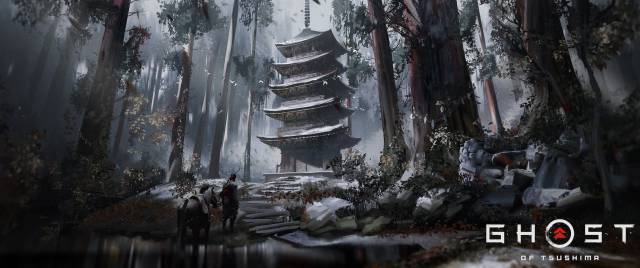 Ghost of Tsushima
Ghost of Tsushima
We will travel to the year 1274, a context where the protagonist must rise as a legend under the name of "The Ghost". A bloody story with betrayals, sacrifice and sword clashes. If there are no delays derived from the coronavirus, as has already happened with The Last of Us Part II, in Ghost of Tsushima there will be no lack of photo mode, while its gameplay defines more as a brawler than as a hack and slash. His biggest challenge, however, will be making us feel like a real samurai.
"We were really really excited to make a game based on Feudal Japan, it's a romantic thing for us," Nate Fox, creative director of Sucker Punch, began at last Paris Games Week 2018. "We wanted to recreate samurai fantasy (…) When We make decisions about what goes in and what stays out of the game, we simply ask ourselves if it is something that will make us feel like a samurai; we just introduce it if it helps the fantastic core of the game feel like wandering like a samurai, ”he says.
On why to choose feudal Japan, it was something that was clear from the beginning, a desire: “As a developer, I was eager to spend time trying to recreate that era; As a player, I wanted to play in an open world based on samurai. And this is a wonderful time in history to do it, but there are many more ”.
It is they who have raised the expectations placed on the game, a game that claims to be "best in class" as AAA. It will be on June 26 when we get out of doubts and we will finally know if Sucker Punch can be catapulted among the most important PlayStation studies today.
Sources
- InFamous Dev Sucker Punch Suffers Layoffs – IGN
- InFamous: Second Son; Sucker Punch details FX Technology – DualShockers
- NDP: Xbox 360 Top Selling Console, inFamous 2 Best Selling Game – NPD
- Office Envy: Sucker Punch Productions – 425 Business
- Official Website, Contact – Sucker Punch
- PlayStation-exclusive Infamous series originally began as an Animal Crossing-style game – GameSpot
- Rocket: Robot on Wheels Review – Gamespot
- Sony's video game unit buys Sucker Punch studio – Reuters
- Sprocket Will Never Be Released – IGN
- What's in a Name: Sucker Punch – Engadget

